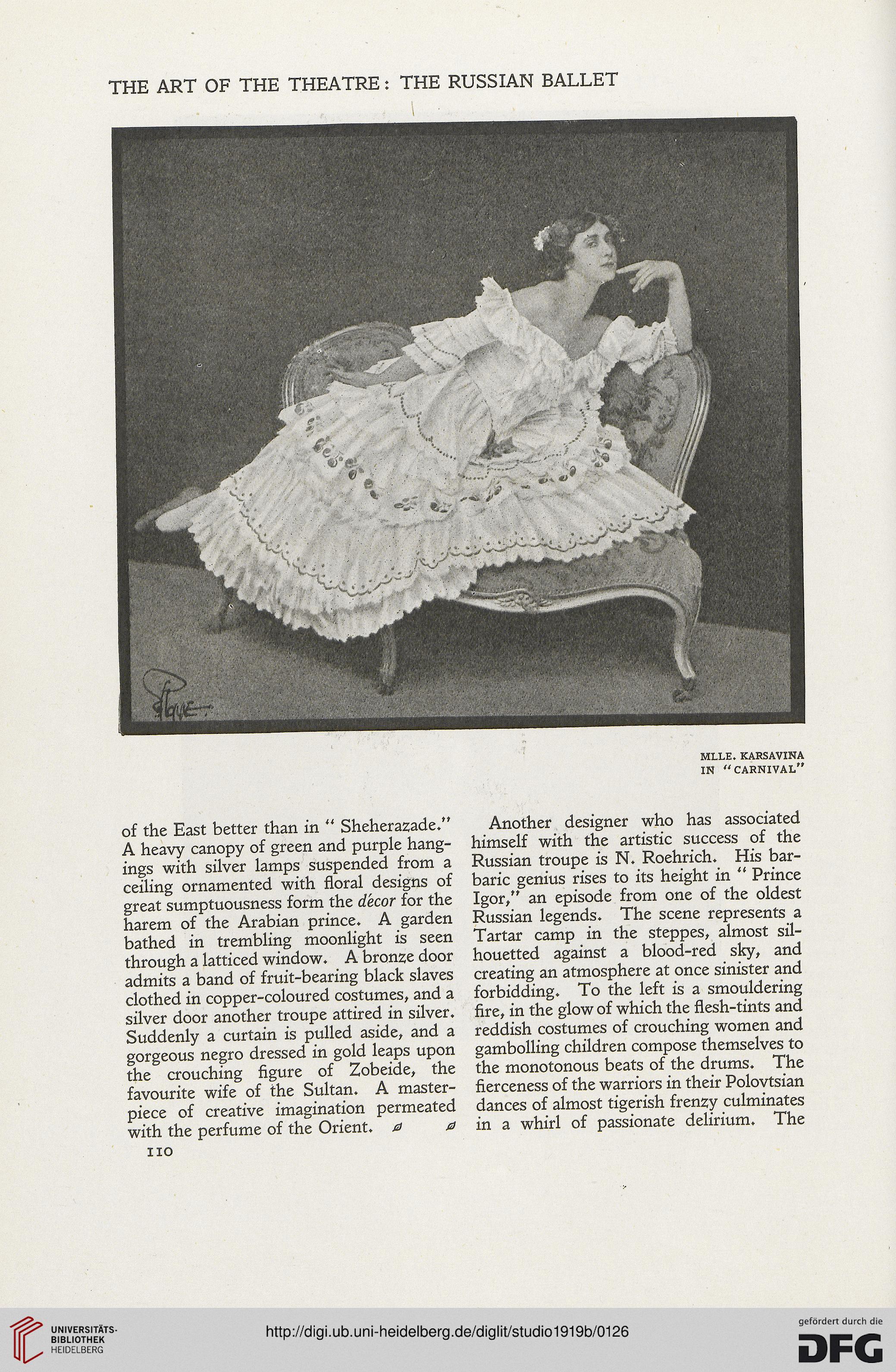THE ART OF THE THEATRE: THE RUSSIAN BALLET
MLLE. KARSAVINA
IN “CARNIVAL”
of the East better than in “ Sheherazade.”
A heavy canopy of green and purple hang-
ings with silver lamps suspended from a
ceiling ornamented with floral designs of
great sumptuousness form the decor for the
harem of the Arabian prince. A garden
bathed in trembling moonlight is seen
through a latticed window. A bronze door
admits a band of fruit-bearing black slaves
clothed in copper-coloured costumes, and a
silver door another troupe attired in silver.
Suddenly a curtain is pulled aside, and a
gorgeous negro dressed in gold leaps upon
the crouching figure of Zobeide, the
favourite wife of the Sultan. A master-
piece of creative imagination permeated
with the perfume of the Orient, a a
no
Another designer who has associated
himself with the artistic success of the
Russian troupe is N. Roehrich. His bar-
baric genius rises to its height in “ Prince
Igor," an episode from one of the oldest
Russian legends. The scene represents a
Tartar camp in the steppes, almost sil-
houetted against a blood-red sky, and
creating an atmosphere at once sinister and
forbidding. To the left is a smouldering
fire, in the glow of which the flesh-tints and
reddish costumes of crouching women and
gambolling children compose themselves to
the monotonous beats of the drums. The
fierceness of the warriors in their Polovtsian
dances of almost tigerish frenzy culminates
in a whirl of passionate delirium. The
MLLE. KARSAVINA
IN “CARNIVAL”
of the East better than in “ Sheherazade.”
A heavy canopy of green and purple hang-
ings with silver lamps suspended from a
ceiling ornamented with floral designs of
great sumptuousness form the decor for the
harem of the Arabian prince. A garden
bathed in trembling moonlight is seen
through a latticed window. A bronze door
admits a band of fruit-bearing black slaves
clothed in copper-coloured costumes, and a
silver door another troupe attired in silver.
Suddenly a curtain is pulled aside, and a
gorgeous negro dressed in gold leaps upon
the crouching figure of Zobeide, the
favourite wife of the Sultan. A master-
piece of creative imagination permeated
with the perfume of the Orient, a a
no
Another designer who has associated
himself with the artistic success of the
Russian troupe is N. Roehrich. His bar-
baric genius rises to its height in “ Prince
Igor," an episode from one of the oldest
Russian legends. The scene represents a
Tartar camp in the steppes, almost sil-
houetted against a blood-red sky, and
creating an atmosphere at once sinister and
forbidding. To the left is a smouldering
fire, in the glow of which the flesh-tints and
reddish costumes of crouching women and
gambolling children compose themselves to
the monotonous beats of the drums. The
fierceness of the warriors in their Polovtsian
dances of almost tigerish frenzy culminates
in a whirl of passionate delirium. The




